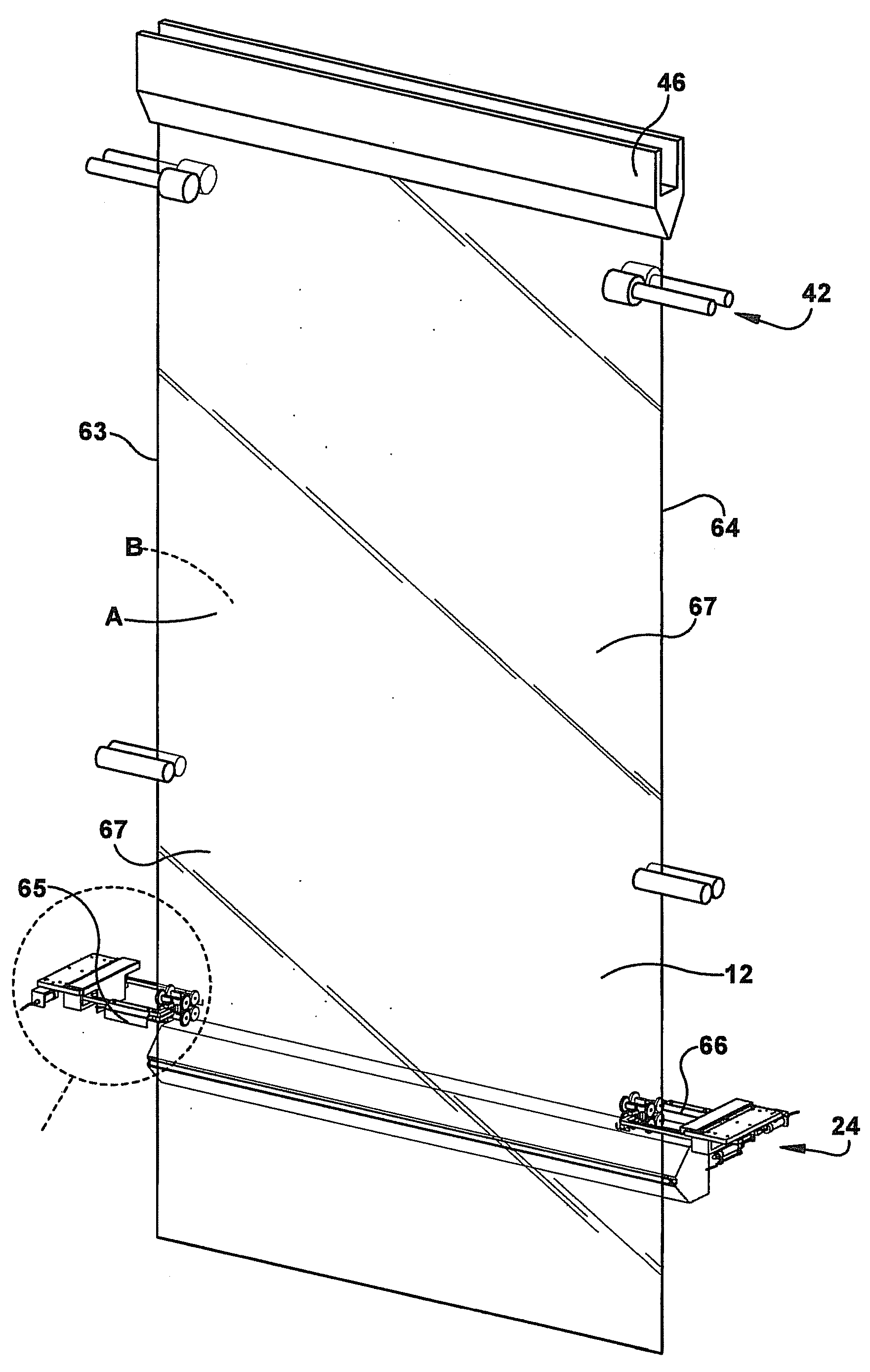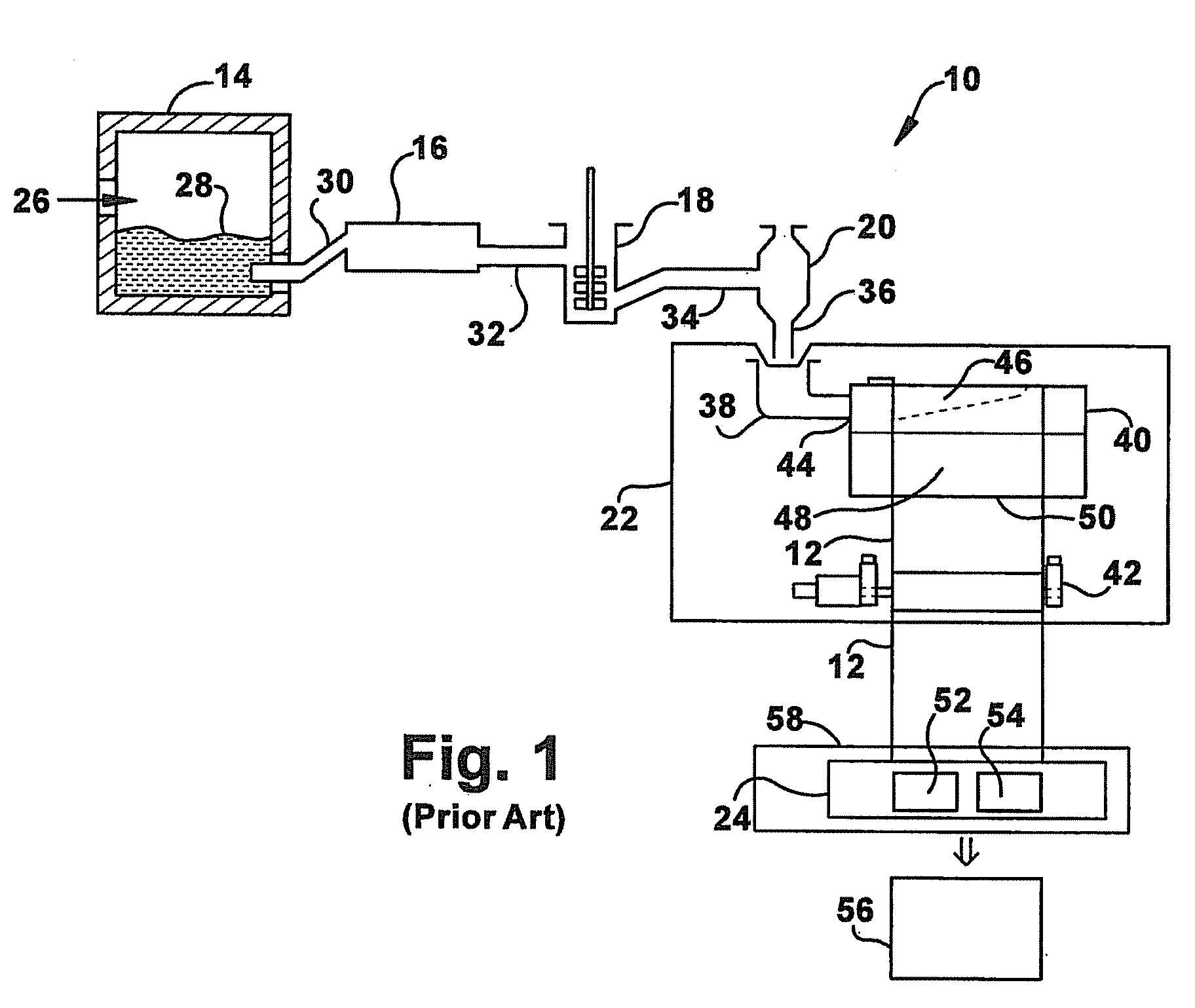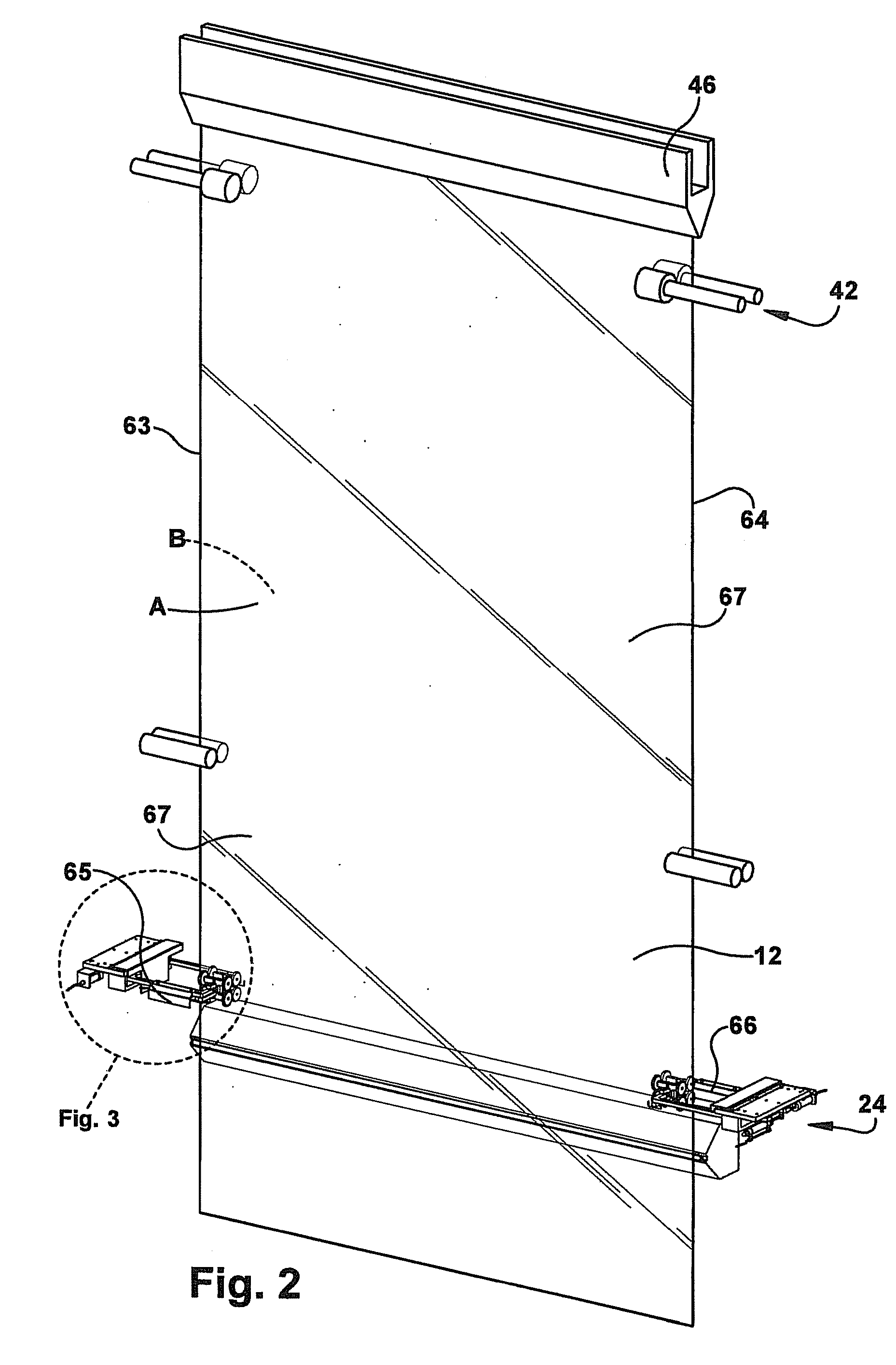Method and device for restraining movement of continuously traveling glass sheet
- Summary
- Abstract
- Description
- Claims
- Application Information
AI Technical Summary
Benefits of technology
Problems solved by technology
Method used
Image
Examples
Embodiment Construction
[0030]The sheet restrainers shown in the embodiment of FIGS. 2-5 are attached to TAM carriage 24 located above score line 62. The sheet restrainers are individual units, one on first side 63 of the glass sheet and the other on second side 64 of the sheet. Two sheet restrainer units 65, 66 are needed to restrain the sheet from both sides A, B (bead areas 67) once the sheet is clamped by each unit. Each unit includes two swing arms 68 movable about pivots 70 connected to frame 72 mounted to the TAM. Each swing arm 68 includes a main arm or first arm portion 74 and an angular control arm or second arm portion 76. Main arm 74 moves about pivot 70 and has an end 78 proximal to the sheet and an end 80 distal to the sheet. Angular control arms 76 are pivotally mounted at pivots 77 to proximal end 78 of each main arm 74. Each unit (e.g., unit 65, FIG. 3) includes a set of four rollers (a pair of rollers 82, and a pair of rollers 84) in contact with\glass sheet 12 on each side (A, B) of the ...
PUM
| Property | Measurement | Unit |
|---|---|---|
| Force | aaaaa | aaaaa |
| Shape | aaaaa | aaaaa |
| Stress optical coefficient | aaaaa | aaaaa |
Abstract
Description
Claims
Application Information
 Login to View More
Login to View More - R&D
- Intellectual Property
- Life Sciences
- Materials
- Tech Scout
- Unparalleled Data Quality
- Higher Quality Content
- 60% Fewer Hallucinations
Browse by: Latest US Patents, China's latest patents, Technical Efficacy Thesaurus, Application Domain, Technology Topic, Popular Technical Reports.
© 2025 PatSnap. All rights reserved.Legal|Privacy policy|Modern Slavery Act Transparency Statement|Sitemap|About US| Contact US: help@patsnap.com



